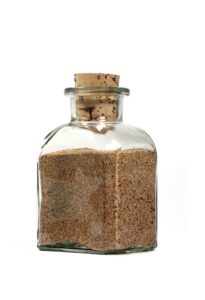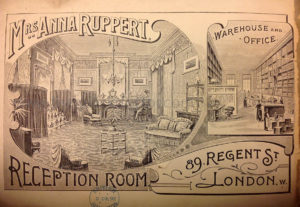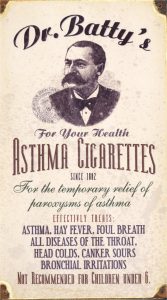MR. ELIAS GROVES, of Clapham, attests, that he was afflicted upwards of a Year and half with a most violent windy Disorder, to so great a Degree, that the Wind would roll about, as it were, all over his Body, and occasion him frequently to be discharging it in a surprising Manner out of his Mouth for ten Hours together. This most grievous Complaint wasted him away as if in an Atrophy, and cause a great Sinking of his Spirits: He had the Advice, and followed the Prescriptions of two eminent Physicians, (as he can make it appear) as well as others, without the least Benefit, until he took Dr. Lowther’s Powders and Drops, the joint Use of which in a short Time entirely remov’d his Complaints.
These Powders and Drops (for the great Invention of which his Majesty honoured Dr. Lowther with his Royal Letters Patent, November 1757) are sold in Six Shilling and Three Shilling Parcels, at Brooke’s Warehouse, Fleet-Street, and Dawson’s Warehouse the foot of Westminster-Bridge; at which last place the Doctor may be consulted gratis every Tuesday from Three to Five, and Tuesdays, Thursdays and Saturdays, from Ten to One, at Brooke’s.
These Powders and Drops are incontestably proved to be the greatest Specific ever invented for the Cure of every Species of Fits, Nervous and Paralytick Disorders. Sold also by Mr. Marlow, at the Angel and Crown Tavern, Tunbridge-Wells, as the Waters of that Place are known to be very powerful Deobstruents, by their Chalybeat Virtues. These Powders may be taken in them to great Advantage.
Source: The Whitehall Evening Post or London Intelligencer, 8-11 July 1758
.
This advert is quite restrained by William Lowther’s standards – he only mentions the King’s Letters Patent once. Elsewhere he drew even more attention to this supposedly great honour, and called the drops the ‘Royal Specific Anodyne Drops.’ Although references to the patent can come across as a bit pompous, Lowther wasn’t alone in using this method of convincing punters that the medicine was respectable. It was common for vendors to do so, and there was no reason why they shouldn’t, although they were perhaps disingenous in implying that the monarch was a personal fan of the product. The king didn’t need to have tried the remedy – patents were granted for all sorts of things, and although the inventor had to provide a written specification of how the medicine was produced, there was no requirement to prove that it worked or even that it was safe.
The ‘Dawson’s Warehouse’ referred to was a carpet warehouse, and in 1757 Dr Lowther’s Tuesday schedule involved hot-footing it over there from Brooke’s in Fleet Street, in time to start his consultations at 2pm. In 1758 he began giving himself an extra hour – perhaps he needed time to grab something to eat on the way.

Although the Powders (patented before the Drops, in June 1755) were also advertised as an anti-epileptic medicine, there was a considerable list of disorders they claimed to help, as related in the London Gazette in June 1757 (spellings and punctuation as in original):
Tremblings, Faintings, Swoonings, Sick Qualms, Reachings, Loathings, lost Appetites, bad Digestion, weak Nerves, Flutterings, Palpitations, Anxieties, confused Thoughts, Lethargies, dull melancholic Dispositions, Vapours, low Spirits, Restlessness, Weariness, Frightful Dreams, Pains in the Head and Stomach, Vertigo’s, Swimings, Giddiness, Dizziness, Dimness, Flushings, the Cramp, Contractions, sudden Catchings, Obstructions, disorders incident to the Fair Sex, and, in fine, the whole train of Fits, Nervous and Paralitic Complaints.
In 1771 Lowther published a pamphlet called A Dissertation on the Dropsy; distinguishing the different species of dropsy, the various causes of the disorder, and the most effectual method of cure. The Monthly Review‘s verdict (shown here in its entirety) was rather dismissive:
This dissertation is full of hard words and cramp phrases, and is written with a view to celebrate the great and unknown virtues of Dr. Lowther’s diuretic drops.
Lowther’s medicine was still well-known enough in the 1780s to warrant it a place in a satirical poem about newspapers, published in The Town and Country Magazine:
Here puffing empirics, in a pompous style
Excite “the passing tribute of a smile”
In Lowther’s far-famed powders you will find
(Forget not those which are prepar’d by Hinde)
Virtues most potent, powerful to cure
The worst diseases men can here endure
Whoe’er on them will, confident, rely
May Death’s dragoons for numerous years defy.




Mr. Elias Groves of Clapham was not in the least bit restrained, it would seem.
I suppose we should be thankful that he was only letting rip from the top end of his digestive system. 🙂
I often suffer from confused thoughts, perhaps I should find myself some of the good Dr’s powders.
Me too! Don’t know if I could afford them at a hefty 6 shillings though.
Dr Lowther advertised his “Tiscorrutic powder”
in the second edition of the Hampshire Chronicle in 1772. Please, does anyone know what was in the powder?
Hi Coroline, I am completing a PhD at the University of Queensland, Australia concerning patent medicines. I have been searching for the correct citation for “Tremblings, Faintings, Swoonings, Sick Qualms, Reachings, Loathings, lost Appetites, bad Digestion, weak Nerves, Flutterings, Palpitations, Anxieties, confused Thoughts, Lethargies, dull melancholic Dispositions, Vapours, low Spirits, Restlessness, Weariness, Frightful Dreams, Pains in the Head and Stomach, Vertigo’s, Swimings, Giddiness, Dizziness, Dimness, Flushings, the Cramp, Contractions, sudden Catchings, Obstructions, disorders incident to the Fair Sex, and, in fine, the whole train of Fits, Nervous and Paralitic Complaints.”
I have been to the London Gazette website and can only find one ad on 17 June 1755 which is not this one. Can you advise where you found the above if on a different date?
Noel
Hi Noel, it’s 28 June-2 July 1757, issue number 9700, page 5. Here’s a link (not sure if this will work in the comments – you might have to paste it into your browser): http://www.london-gazette.co.uk/issues/9700/pages/5
Oh, good – the link does work.
Hi Caroline, It worked! Many thanks for your assistance